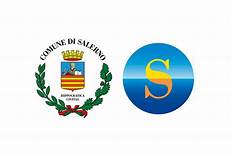Changes In Human Resource Post Covid
Strategic HRM, often known as "people strategy," is developing a well-thought-out plan for hiring, managing, and developing workers in ways that serve an organization's long-term objectives. Strategic human resource management links a company's human resources to plans, objectives, and goals.
Human resource management aims to improve flexibility, creativity, and competitiveness while creating a culture that is appropriate for the organization's goals and boosts a company's performance. It assists in ensuring that the many components of people management work together to generate the behavior and atmosphere required creating value and achieving performance goals. It emphasizes long-term human resource challenges, such as matching resources to future demands and broad-scale concerns regarding structure, quality, culture, values, and commitment.
HRM has the following advantages:
Improved Job satisfaction
A more positive work environment
Customer satisfaction has improved
Resource management that is effective
proactive Employee management
Boost your output
All these responsibilities come with their own set of challenges. In the modern world, one may learn to combat these challenges via AI tools and practices taught in the Executive Certification Programme in HR Analytics by IIM Rohtak.
One recent challenge that has shaken the global industry is the ongoing COVID-19 pandemic.
For the great majority of employees, COVID-19 has transformed their work experience. It compelled businesses all around the world to change the way they organize work and create jobs. It also led to changes in HR policies and strategies. A disproportionate amount of strategic HRM research has looked at shareholder value as the determining factor, in the past, and the implications of such a narrow focus were uncovered by the COVID-19 outbreak. The issues connected with COVID-19 emphasize the necessity for HR practitioners to reconcile different stakeholders' requirements and build strategies to improve recruitment and employee management in the future.
Remote working has become a necessity, and HR departments now have new duties to deal with. They must provide a common platform for all personnel from all geographical and socioeconomic origins, particularly those who work in the interior areas. HR professionals have to make some difficult decisions in the areas of talent acquisition and management. Reduced team sizes and smart personnel procurement are required due to dwindling revenues and challenging team management. Employees are more insecure than ever as a result of the skyrocketing layoff statistics and rising freelancer intakes. HR's responsibilities do not end with the retention or dismissal of workers. If HR professionals were to pick between hiring new employees and training existing ones, the majority would choose the latter.
The primary objective of every HR staff is to ensure work continuity and to manage daily duties with the greatest potential results from workers. For remote-working teams, declining employee productivity is a major obstacle, and efficient collaboration is the only way out. HR is responsible for revitalizing the workplace and ensuring that employees can perform at their best.
The epidemic has emphasized the need to learn more about how the workplace impacts employee behaviour and behaviors. Post-covid, Strategic HRM highlights conflicts among stakeholders and emphasizes the importance of considering employees, consumers, and communities in addition to shareholders. A holistic approach is the only way to go forward in a world that has shrunk further and united during these challenging times.
